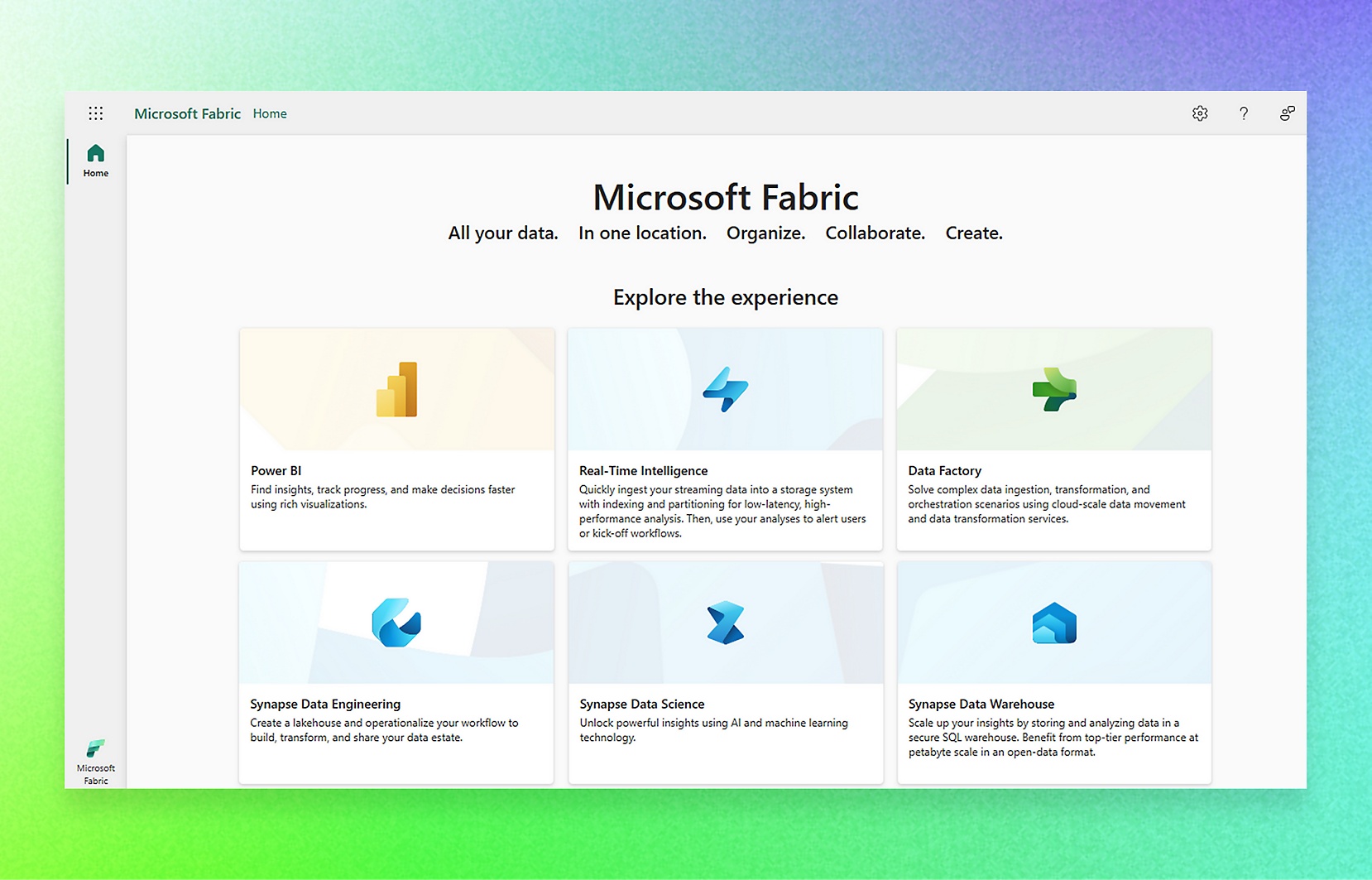
Senior Innovation & Business Unit Director, Inspari

Still on the fence? Don’t be. Remember the groundbreaking introduction of Power BI (i.e. leveraging the Microsoft-muscles of manpower and out-of-the-box integrations to act as fast-follower in an already crowded market of specialists, and ending up as the dominating party)? The sense of déjà vu you're feeling is justified. Only this time, the revolution in data management and analytics is even more profound, more integrated, and more accessible.
Welcome to the dawn of Microsoft Fabric - ready to redefine how we think about and interact with our data ecosystems.
Microsoft Fabric: The Present and Future
Microsoft Fabric has emerged not just as another tool, but as a cornerstone for the future of data analytics and management. Launched at Microsoft Build 2023, it was introduced as a complete reimagining of analytics — a single, SaaS platform designed to handle every facet of the analytics process. Built on a multi-cloud data lake foundation, Microsoft Fabric and its intelligent data platform stand ready to be game changers.
future of data analytics and management. Launched at Microsoft Build 2023, it was introduced as a complete reimagining of analytics — a single, SaaS platform designed to handle every facet of the analytics process. Built on a multi-cloud data lake foundation, Microsoft Fabric and its intelligent data platform stand ready to be game changers.
Microsoft's vision for Fabric is expansive. It's designed as a lake-centric, open platform that empowers every business user with AI-powered capabilities. At its heart, Microsoft Fabric features a suite of technologies that seamlessly integrate AI, analytics, database, and security solutions. This integration means organizations can harness the full power of their data without the cost and complexity of piecing together services from multiple vendors.
.. And so what, you might say, and why is this even new?
Well, the fact that the overall mission is building THE SaaS solution with “unified” at its core, and interconnectivity across all platforms is a rather unique value proposition in this space of highly capable and specialized technology already. The fact that the barriers of entry are low is also fairly unique – at least the barrier of entry is low compared to putting all these parts together from a variety of different vendors.
Ecosystem Expansion and Openness
The ecosystem around Microsoft Fabric, powered by OneLake, offers unprecedented opportunities to centralize data from disparate sources into a single, coherent platform. This ecosystem paints a picture of a more open Microsoft, embracing collaboration and innovation with partners like Databricks, Snowflake and many more.
AI plays a pivotal role in this ecosystem, with Copilot embedded throughout Fabric, ensuring that intelligent insights and automation are readily accessible to enhance decision-making and efficiency – a promising potential when incorporated widely and in everything we do.
Addressing Scepticism
Resistance to new technologies is natural. Some may cite concerns about the learning curve, integration challenges, or the necessity of transitioning to a new platform. However, the rapid improvements and the comprehensive nature of Microsoft Fabric address these concerns head-on. It's not just about adopting a new system—it's about empowering your organization to leverage data more effectively and efficiently than ever before. Technology is not the solution to organizational empowerment, but with something like Fabric at our disposal, we might actually get time to address the organization (the people, the business needs) and not spend all our time acting as ‘Chief Integration Officers’, but actually spend time on what matters.
Five Tips for Decision-Makers
- Plan Your Transition : Develop a clear BUSINESS PURPOSE and develop a phased approach for adopting Microsoft Fabric for delivering on said purpose, ensuring minimal disruption and maximizing value from the outset.
- Embrace the Ecosystem: Leverage the integrated suite of technologies within Microsoft Fabric to streamline your data management and analytics processes.
- Focus on AI: Utilize the AI-powered capabilities and embedded Copilot to gain insights and automate tasks, making data more accessible and actionable for all users.
- Prioritize Openness: Take advantage of Fabric’s lake-centric, open platform to ensure flexibility and scalability.
- Engage with the Community: Collaborate with partners and other organizations within the Fabric ecosystem to share knowledge and best practices.
Moving Forward with Confidence
- Seek Expertise: Consider consulting with a Fabric Featured Partner who can offer deep insights, Microsoft connections, and tailored advice.
- Assess Your Solution: Engage in a Solution Assessment to understand how Microsoft Fabric can fit into your current Data Platform and meet your specific needs.
- Develop a Roadmap: Work towards creating a concrete plan for your organization’s data management journey from its current state to a future powered by Microsoft Fabric.
Ask me about Microsoft Fabric
|
My name is Casper Høgh, and I'm a Senior Data Platform Advisor at Inspari. I've been part of the Fabric Featured Partner Programme since early 2023, and I help our customers get onboard Microsoft Fabric. So, if you have any questions, please reach out to me in the form below. |
 |
Curious for more? Register for our next webinar
Relaterede Posts
Kommunerne i skyen
Jeg bliver nervøs på kommunernes vegne. I maj blev byen Baltimore angrebet af hackere, der...
Spar penge og øg kvaliteten med AI i din kommune
Du har levet under en sten, hvis ikke du er stødt på nogen, der har talt om kunstig intelligens...
Automatiseret machine learning
Du er måske ikke klar over det. Men tidspunktet, hvor man som virksomhed begynder at overveje,...


